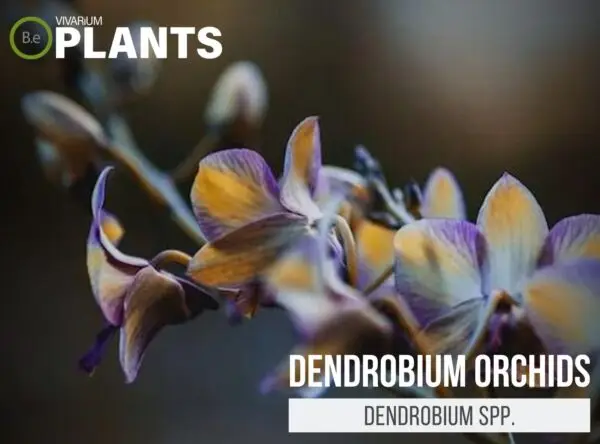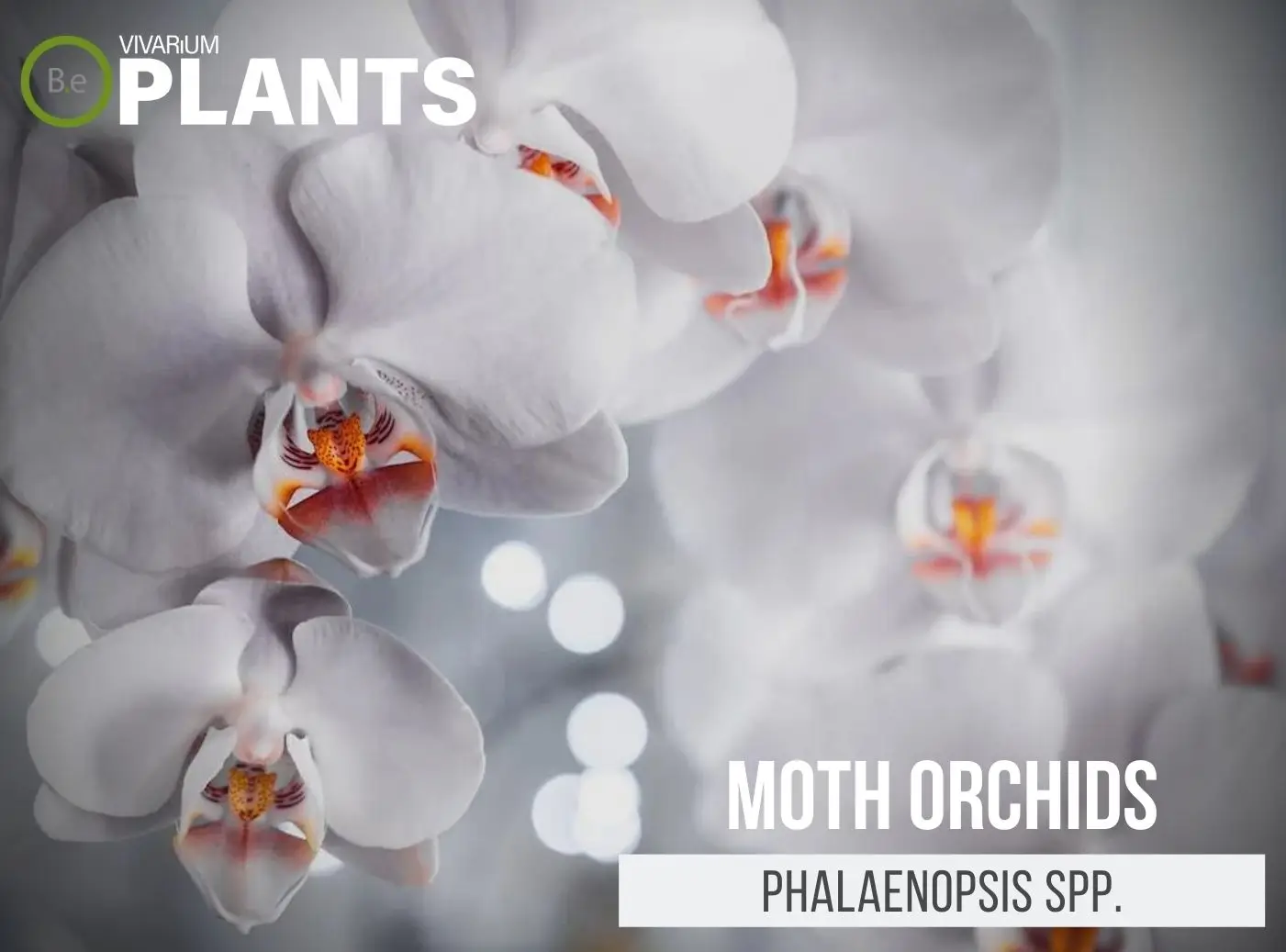Dendrobium orchids are stunning and diverse species of tropical flowers that are a perfect addition to any terrarium.
With their delicate blooms, bright colors, and low-maintenance care, these orchids bring a lush tropical ambiance to any space.
From spectacular cascading varieties to tiny climbing species, there‘s a dendrobium orchid to suit every terrarium.
In this article, we‘ll explore the different types of dendrobium orchids and how to care for them in your terrarium.
So if you‘re looking to add a touch of tropical beauty to your home, read on to learn more about these gorgeous terrarium orchids!
| Quick Stats: | |
|---|---|
| Scientific Name | Dendrobium spp. |
| Common Name | Tropical orchid |
| Family Name | Orchidaceae |
| Habitat | Tropical rainforests |
| Temperature | 70°F to 80°F |
| Height | 2.5 to 3.5 Ft |
| pH | 6.5 to 7.5 |
| Lighting | Moderate |
What Are Dendrobium Orchids?
Dendrobium is a genus of orchids that can be found around the world in tropical regions.
These types of orchids are epiphytic, which means they get their nutrients from the air and not from the soil, and tend to grow on the surfaces of trees and other hard surfaces.
Dendrobiums come in the form of sympodial or monopodial and each type will grow differently.
The flowers are stunning and can come in a wide range of colors.


Dendrobium Orchids Facts
Dendrobiums are great for vivariums because they can handle a wide range of moisture levels.
They also have natural fragrances that attract many oriental insects such as butterflies, bees, and moths.
The stem of a dendrobium’s root is typically thick and succulent, so it can hold a lot of moisture without being overwatered.
The orchid is also incredibly resilient and can adapt to many types of environments with the right care.
Description
Dendrobium orchids have long stems that can reach up to 2.5 to 3.5 feet in height.
Their stems are often covered in long green leaves that are arranged in pairs.
Flowers are the highlight of this plant as they often come in many shapes and sizes.
The most popular bloom shape is a star and comes in a range of colors from pink to purple, and red to white.
Habitat
Dendrobium orchids are found in tropical regions all over the world, from South Africa to Southeast Asia.
These plants prefer hot and humid conditions and an environment with bright, indirect light.
Because Dendrobiums are epiphytic, they normally live on the surface of trees or other hard surfaces.
While in the terrarium, use medium to hardwood, as a substrate and make sure the soil is very well-drained.
pH Preference
Dendrobiums have a slightly acidic to neutral pH while they are growing, but they can tolerate a wide range of pH levels.
They prefer a pH range between 6.5 and 7.5, so make sure to check your vivarium and substrate levels before adding any of these plants.
Vivarium Type
This type of moss will do great in a variety of vivarium types.
When deciding what type of setup will be best for this plant, always keep in mind that it is an aquatic plant.
Although it does not need to be completely underwater, nano moss will require aquatic areas for it to thrive.
Vivarium Placement
Dendrobium orchids thrive in many different terrarium types, but they do best when they can soak up the indirect, bright light that most vivariums are able to provide.
Vented vivariums are preferable since they allow air to circulate better, and plants require humidity to survive.
Additionally, these orchids prefer an environment with a temperature range of 65–78 °F (18–26 °C) and a humidity level of 60–80%.
Substrate
Dendrobiums prefer a range of substrates, including hardwood, gravel, and even stones and tree bark.
You also can use cork bark and moss on the surface of the substrate, to hold in a little more moisture.
Lighting
These plants prefer bright, indirect light. They can tolerate low terrarium light levels, but for the best growth, use UVB lamps 6-8 inches away from the leaves.
This will keep your Dendrobiums looking healthy and blooming throughout the year.
Buy Dendrobium Orchids
When shopping for orchids, expect a few key indicators you are buying the best quality plant.
The plant should be pest free. The source of the orchid will more than likely not be in bloom so don’t worry if it arrives without flowers.
Click the image below to find out more about the current price and other relative info:
Dendrobium Orchids Care and Propagation
Dendrobium orchids require a lot of attention when it comes to nurturing and caring for the plant.
But with patience and lots of attention, you should be able to get your Dendrobiums to flourish.
For propagation, the best way is to separate the stems and pots each one in its own pot with a lot of ventilation.
You may also want to divide the larger clumps of stems and replant each of them separately.
How to grow
The best way to replicate and grow more Dendrobium Spp. is through division.
After pruning off the spent flowers and leaves, the stem should be split into a few sections and repotted.
Keep the soil slightly moist and provide indirect light, and the new divisions will sprout new growth and will quickly establish themselves in the vivarium.
Watering
Like many orchids, Dendrobium Spp. should not be overwatered. The soil should be allowed to dry out between waterings, but the orchid should never dry out completely.
Watering with a mister or spray bottle can help keep humidity levels high while still maintaining the necessary levels of moisture for the plant.
Plants Similar To Dendrobium Orchids
Adding diversity to an enclosure is key to an aesthetically pleasing enclosure.
Try mixing up the look of your terrarium with different flora that can easily co-exist in the same types of environment.
Furthermore, if for some reason you find this orchid hard to acquire or would like to consider something similar to this terrarium plant…
Here are some other plants you might find may do well with or in the place of Dendrobium spp.:
Conclusion
Overall, I believe that Dendrobium orchids are a great addition to any terrarium. These plants are beautiful and vibrant, and they can add a lot of color and depth to the enclosure.
They require a lot of attention and care, but with the right environmental conditions and proper watering and fertilization, you should be able to get your Dendrobiums to blossom beautifully.
Frequently Asked Questions
1. Water a Dendrobium orchid once or twice a week, depending on its size and the growing conditions.
2. Provide the orchid with high humidity levels and indirect sunlight.
3. Fertilize a Dendrobium orchid every two weeks with a balanced fertilizer during the summer growing season. (BONUS)
4. Position the orchid in a spot that has temperature fluctuations between 60 and 90°F.
5. Repot a Dendrobium orchid every two to four years, changing the potting mix to one that is more aerated and porous.
The Dendrobium orchid is typically an indoor plant, but some species can be grown outdoors in warm climates.
Yes, it is recommended to mist your Dendrobium orchid every few days as it helps keep the plant hydrated, prevent dehydration and keep the leaves from drying out. It also helps prevent plant diseases.
The best place to put a Dendrobium orchid is in a bright spot with indirect sunlight, and in an environment with high humidity and good air circulation. The orchid should also be kept out of drafts and away from high heat.




